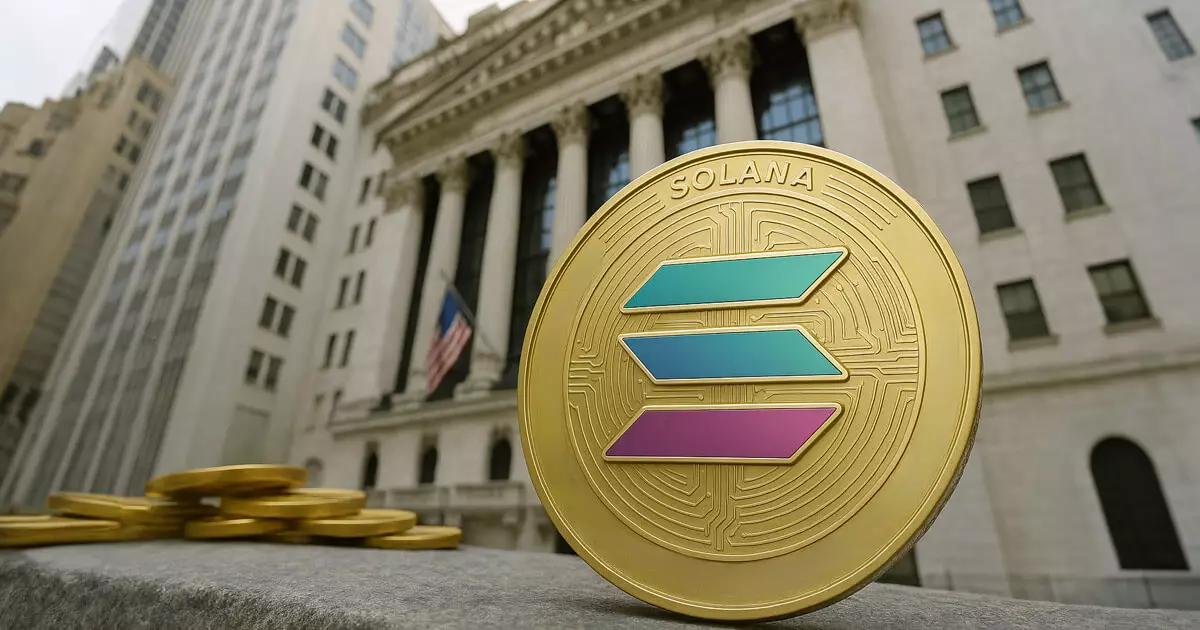Grayscale’s recent initiative to transform its Grayscale Solana Trust into a publicly traded exchange-traded fund (ETF) is a pivotal moment, not just for the company but for the entire cryptocurrency landscape. By filing a Form S-1 with the U.S. Securities and Exchange Commission (SEC), Grayscale positions itself as a leader in embracing innovation amidst an environment still grappling with regulatory uncertainty. With recent predictions from crypto traders placing the odds of SEC approval for a Solana ETF at a striking 83% by year-end, the underlying sentiment reflects a growing optimism in the willingness of regulatory bodies to adapt to the new digital economy.
A Cautious Yet Calculated Approach
However, the optimism isn’t shared evenly. The same traders assign a mere 23% likelihood for approval before July 31, indicating a cautious expectation as the SEC likely grapples with complex regulatory frameworks surrounding cryptocurrencies. Grayscale’s filing, nearly four months after its previous submission, demonstrates a deliberate and calculated approach. It hints at a clear understanding of the regulatory landscape, yet irrefutably exposes the company’s unease in confronting persistent regulatory obstacles. The conservative decision to forego staking and yield generation from Solana’s proof-of-stake network until definitive guidance is provided reinforces the notion of cautious participation in the evolving market landscape.
Partners on Board: Custodians of Trust
The collaboration with Coinbase as the custodian and BNY Mellon as the fund’s administrator signals a robust infrastructure to bolster investor confidence. Yet, one can’t ignore the reality that while Grayscale is seeking to innovate, it must still align with the SEC’s stringent regulatory mandates. The cryptic nature of the industry means that players like Grayscale must tread carefully to avoid the missteps that have led predecessors astray. This strategic partnership, rather than hastily launching an ambitious product, further reflects an inherent understanding of the need for compliance in a space that is still very much under scrutiny.
Regulatory Shifts and Long-term Vision
Under Gary Gensler’s leadership, the SEC adopted an antagonistic approach toward staking, evident in their lawsuits targeting various crypto entities. With a new administration potentially signaling a shift in sentiment, many observers are watching to see if the regulatory body can balance fostering innovation while ensuring investor protection. This delicate balance is where the future of crypto ETFs could thrive or falter. If the barriers against staking in ETF structures grow more permissive, asset managers could see a path to maximize returns for investors. Yet, until a green light is granted, companies must navigate these turbulent waters with a blend of aggressive ambition and meticulous caution.
Grayscale’s venture into launching a Solana ETF could stand as a bellwether for the wider acceptance of cryptocurrency in mainstream finance. The balance between regulatory compliance and potential innovation will remain a significant narrative, and the market will closely observe how this story unfolds. The future of ETFs in crypto is not solely about financial instruments; it reflects a growing societal recognition of digital assets’ legitimacy.



















Leave a Reply